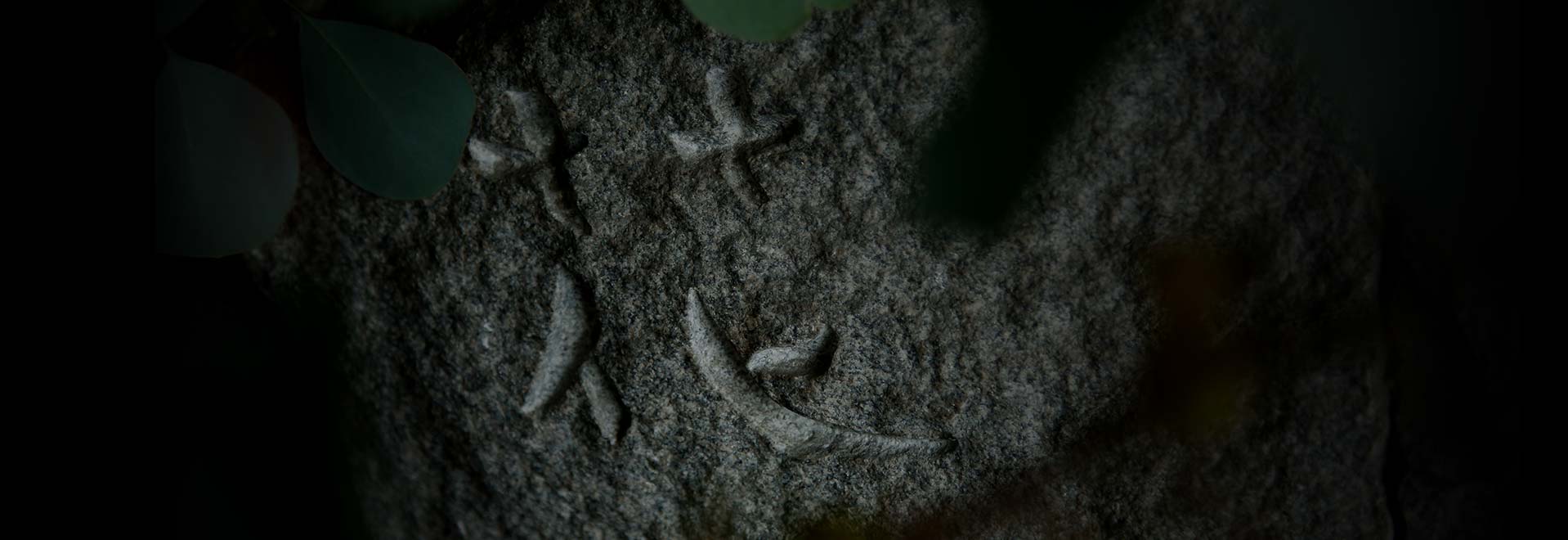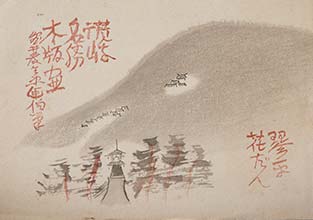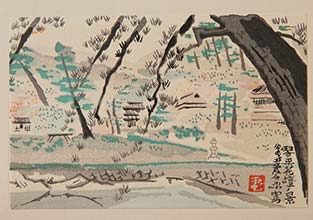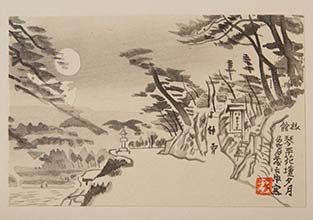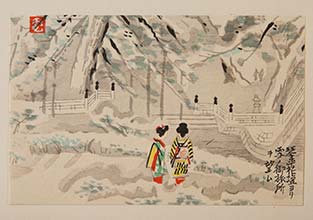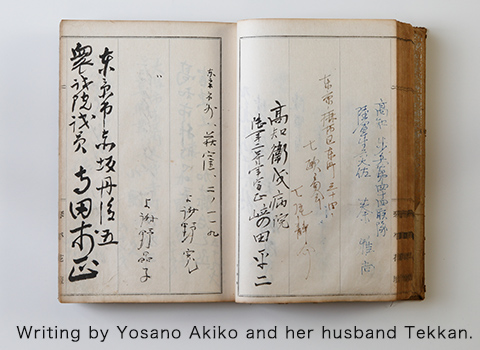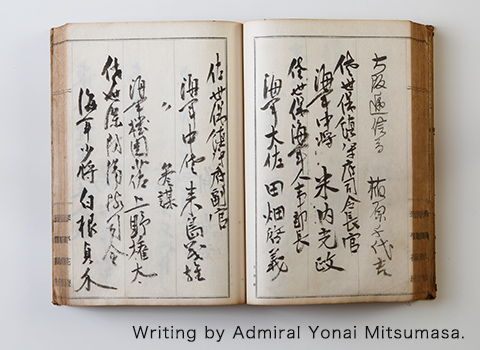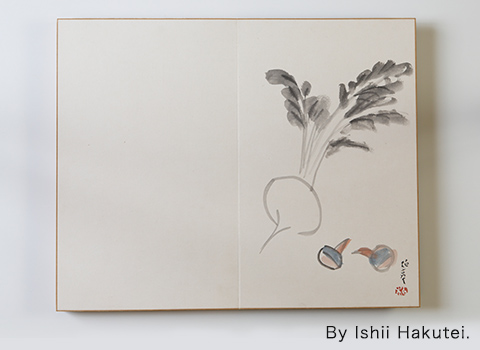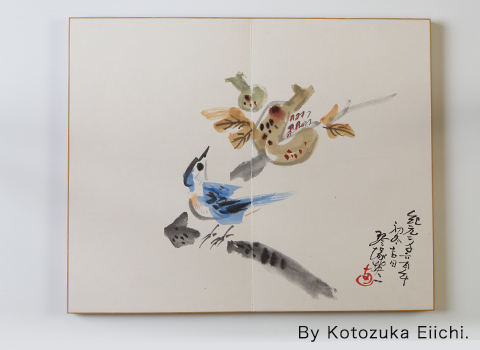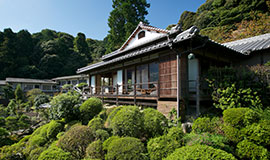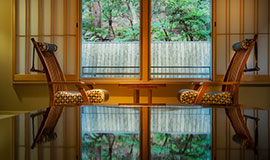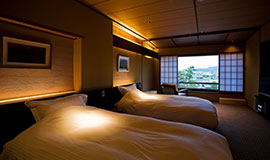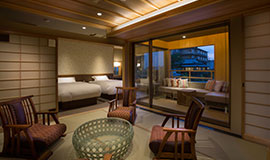Connect with History

- HOME
- Connect with History
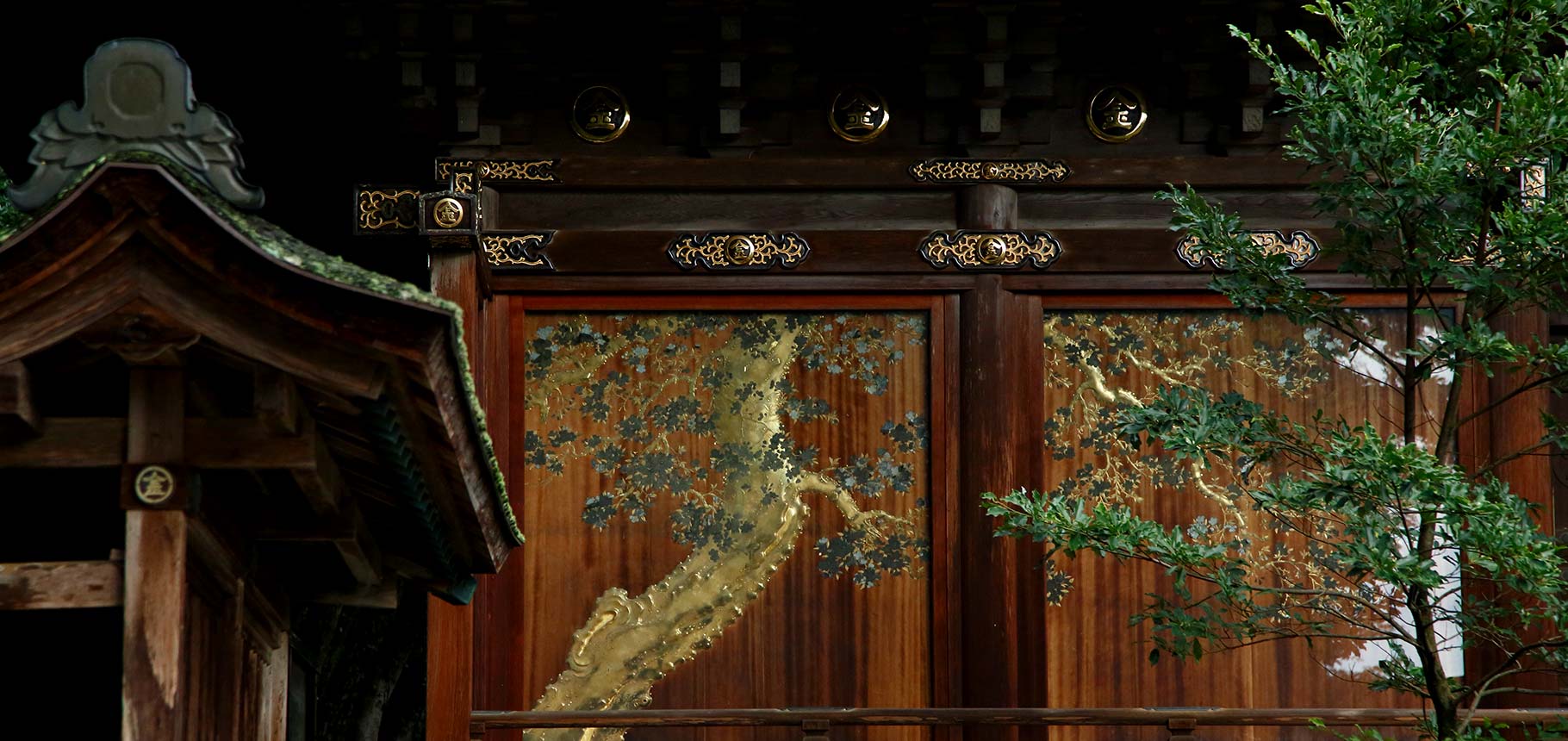
KOTOHIRA-GU KOTOHIRA-GU SHRINE
Blessings from the God of the Sea
Tradition and History Meet in Kotohira
Known affectionately as Konpira, Kotohira-gu Shrine is the abode of both the god Omononushi-no-kami and the Emperor Sutoku. They are jointly known as Konpira-no-ookami-sama, or the Great Gods of Konpira. Omononushi-no-kami is a sea deity worshiped widely by many faithful as an all-powerful god.
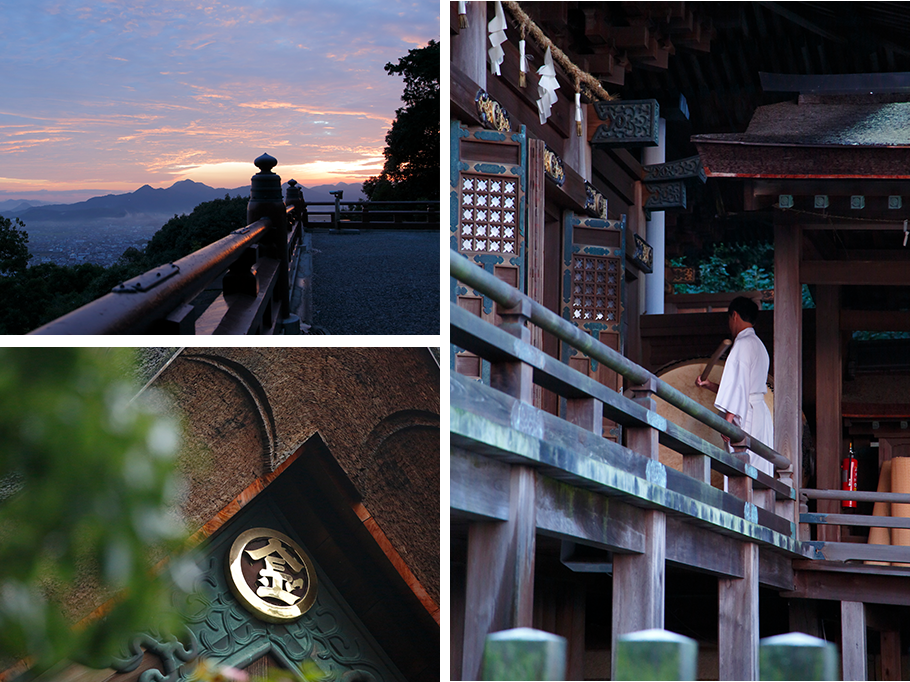
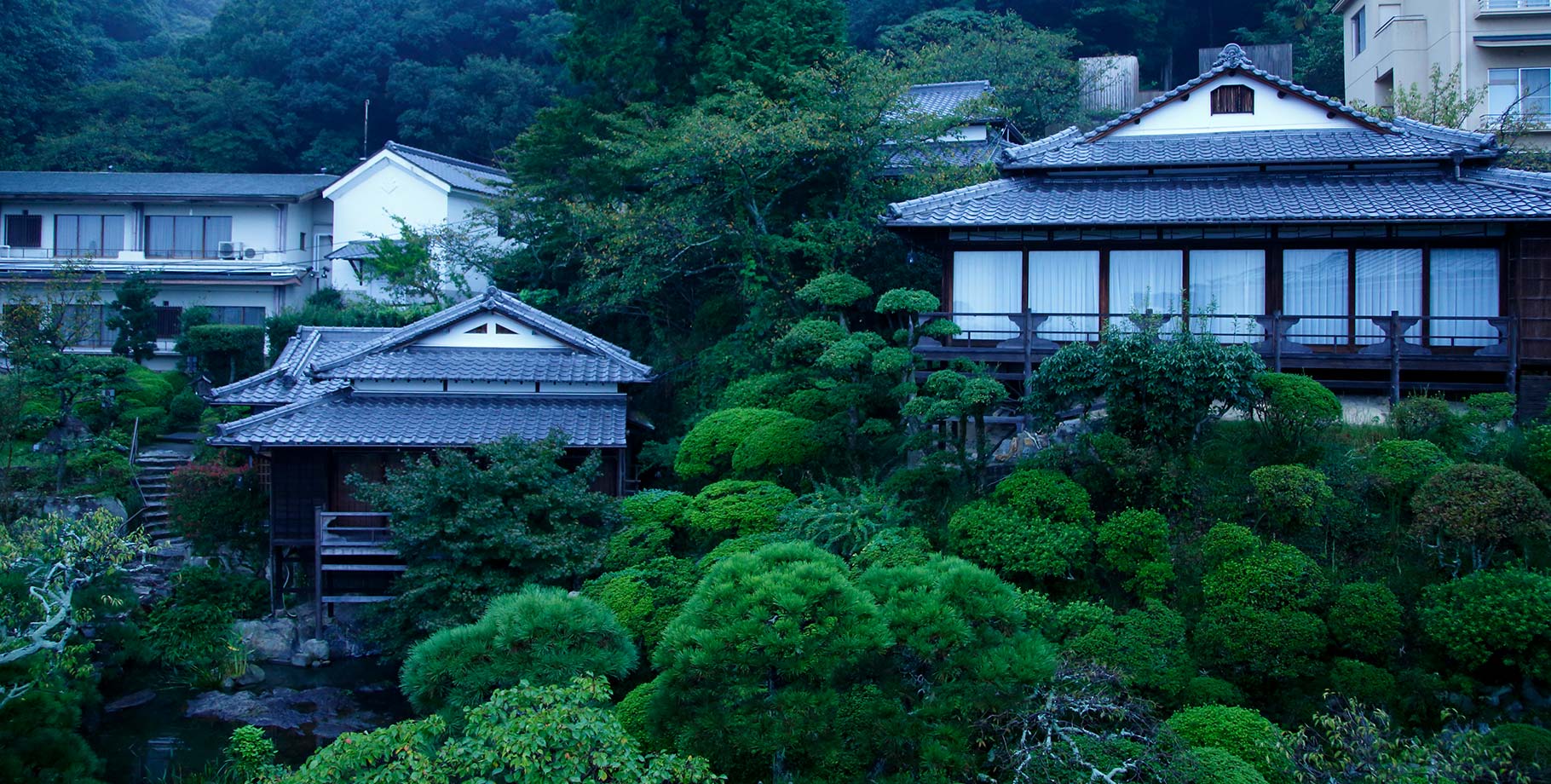
THE HISTORY OF KOTOHIRA KADAN Over 400 years of history
Kotohira Kadan first opened in 1627 as an inn for travelers visiting Konpira-san, although it would be more than 300 years before it would be known by this name. In 1905, the 16th proprietor of Bizen-ya (Kadan's former name), Miyoshi Genjiro, converted the inn into several cottages and it became a full-fledged ryokan. Its crowning glory was its beautiful Japanese garden, and the cottages were tucked here and there throughout the landscape. Kotohira Kadan's reputation grew, and over the years, it welcomed many writers and intellectuals on their visits to Konpira. Artists and calligraphers were also invited to stay, too. They left behind many exquisite traces of their time in Kotohira. Kotohira Kadan has evolved to accommodate modern luxuries over the years, but its original charm and tradition has been carefully preserved.
WOODBLOCK PRINTS BY KAMEI TOBEI
These woodblock prints by Kamei Tobei were presented by Kotohira Kadan to their guests so everyone can appreciate their beauty. Master Kamei has carefully depicted Mt. Kotohira, the townscape, and Kotohira Kadan.
CHRONOLOGY
| 1627 |
First established as a traveler's inn called Bizen-ya. |
|---|---|
| 1904 |
Russo-Japanese war begins(ends in September 1905). |
| 1905 |
16th owner Miyoshi Genjiro opens the villa Kotohira Kadan as a traditional Japanese cuisine hotel. |
| 1908 |
Renowned author Mori Ogai stays. |
| 1909 |
Mori Ogai publishes the novel Konpira. |
| 1931 |
Author Yosano Akiko and her husband Tekkan stay. |
| 1935 |
Poet Kitahara Hakushu stays. |
| 1936 |
Poet and playwright Yoshi Isamu stays. |
| 1939 |
Author Ibuse Masuji stays. |
| 1951 |
Choseiden is moved from Tadotsu Town to Kotohira Kadan. Kotohira Kadan is registered as No.21 on the list of international tourist hotels by the Japanese government. |
| 1953 |
His Imperial Highness Prince Takamatsu stays. |
| 1964 |
The Tokaido Shinkansen opnes, as does the Tokyo Olympics. The structure of the main building is converted from wood to reinforced iron. The great hall with 120 mats is completed. |
| 1970 |
Expo'70, Japan World Exposition, is held in Osaka. The structure of Sansuikaku is converted from wood to reinforced iron. |
| 1975 |
The Sanyo Shinkansen between Okayama and Hakata opens. |
| 1977 |
The public bath, the wedding hall, 10 rooms in Fujimidai, and the banquet room with 90 mats in Sansuikaku are completed. |
| 1988 |
The Seto Ohashi Bridge is completed. Fujimidai is expanded to 5th and 6th floors, with 20 rooms added on. |
| 2008 |
The main building is renovated and renamed Shogetsu Terrace. The Garden Lounge, guest rooms, and private bath are completed on the third floor. Fujimidai and the public bath are also renovated. A Thai-style massage salon also opens in a separate building. |
| 2012 |
8 rooms in Sansuikaku are remodeled. |
| 2013 |
Choseiden and Enjukaku are remodeled. |
| 2016 |
The murals on sliding doors in Choseiden are appraised by experts. |
| 2018 |
Fujimidai renewal |
| 2019 |
Sansuikaku's grand renewal renovation, rooms with open-air baths, Private bath Mori no Yu completed, Japanese rooms renovated |
| 2023 |
More guest rooms with open-air baths added to the Sansuikaku |
| 1627 |
First established as a traveler's inn called Bizen-ya. |
|---|---|
| 1904 |
Russo-Japanese war begins(ends in September 1905). |
| 1905 |
16th owner Miyoshi Genjiro opens the villa Kotohira Kadan as a traditional Japanese cuisine hotel. |
| 1908 |
Renowned author Mori Ogai stays. |
| 1909 |
Mori Ogai publishes the novel Konpira. |
| 1931 |
Author Yosano Akiko and her husband Tekkan stay. |
| 1935 |
Poet Kitahara Hakushu stays. |
| 1936 |
Poet and playwright Yoshi Isamu stays. |
| 1939 |
Author Ibuse Masuji stays. |
| 1951 |
Choseiden is moved from Tadotsu Town to Kotohira Kadan. Kotohira Kadan is registered as No.21 on the list of international tourist hotels by the Japanese government. |
| 1953 |
His Imperial Highness Prince Takamatsu stays. |
| 1964 |
The Tokaido Shinkansen opnes, as does the Tokyo Olympics. The structure of the main building is converted from wood to reinforced iron. The great hall with 120 mats is completed. |
| 1970 |
Expo'70, Japan World Exposition, is held in Osaka. The structure of Sansuikaku is converted from wood to reinforced iron. |
| 1975 |
The Sanyo Shinkansen between Okayama and Hakata opens. |
|---|---|
| 1977 |
The public bath, the wedding hall, 10 rooms in Fujimidai, and the banquet room with 90 mats in Sansuikaku are completed. |
| 1988 |
The Seto Ohashi Bridge is completed. Fujimidai is expanded to 5th and 6th floors, with 20 rooms added on. |
| 2008 |
The main building is renovated and renamed Shogetsu Terrace. The Garden Lounge, guest rooms, and private bath are completed on the third floor. Fujimidai and the public bath are also renovated. A Thai-style massage salon also opens in a separate building. |
| 2012 |
8 rooms in Sansuikaku are remodeled. |
| 2013 |
Choseiden and Enjukaku are remodeled. |
| 2016 |
The murals on sliding doors in Choseiden are appraised by experts. |
| 2018 |
Fujimidai renewal |
| 2019 |
Sansuikaku's grand renewal renovation, rooms with open-air baths, Private bath Mori no Yu completed, Japanese rooms renovated |
| 2023 |
More guest rooms with open-air baths added to the Sansuikaku |
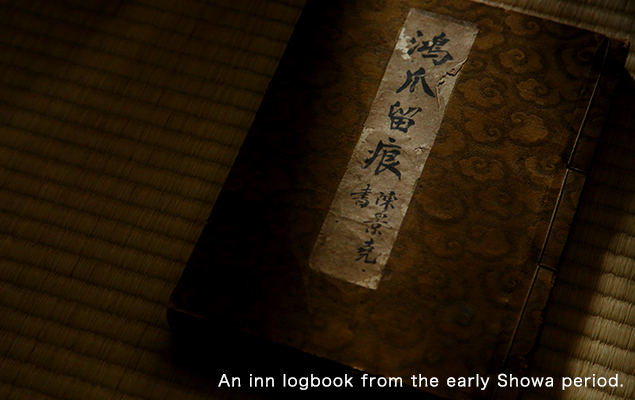
THE HISTORICAL MATERIALS Records that Remain
From its grand opening during the Meiji period, Kotohira Kadan has enjoyed the patronage of some of early modern Japan's most illustrious luminaries. Many high-ranking military offcials came to worship at Kotohira-gu Shrine during war tims. Among these are Admiral Yonai Mitsumasa of the Imperial Japanese Navy (who later became the 37th Prime Minister) and also the great General Nogi Maresuke, one of Japan's most enduring heroic figures. Many early modern literary greats also have stayed at Kadan, such as Mori Ogai, Kitahara Hskushu, Yosano Akiko, and Ibuse Masuji. Kadan has also hosted members of the Imperial family.
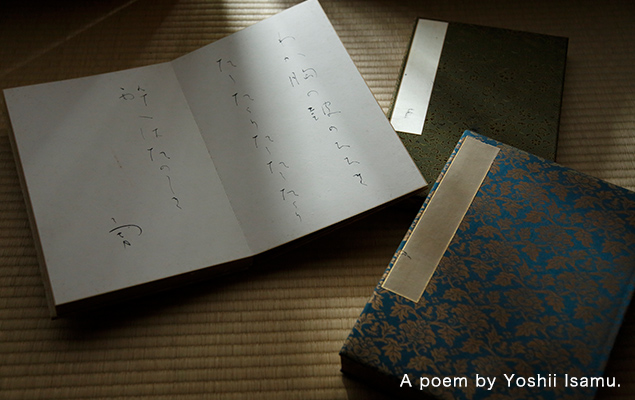
THE HISTORICAL MATERIALS Records that Remain
From its grand opening during the Meiji period, Kotohira Kadan has enjoyed the patronage of some of early modern Japan's most illustrious luminaries. Many high-ranking military offcials came to worship at Kotohira-gu Shrine during war tims. Among these are Admiral Yonai Mitsumasa of the Imperial Japanese Navy (who later became the 37th Prime Minister) and also the great General Nogi Maresuke, one of Japan's most enduring heroic figures. Many early modern literary greats also have stayed at Kadan, such as Mori Ogai, Kitahara Hskushu, Yosano Akiko, and Ibuse Masuji. Kadan has also hosted members of the Imperial family.

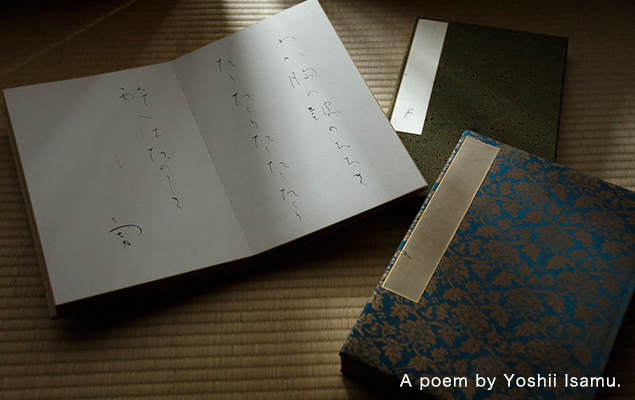
The pines are green, the maples are red/ I've come here to Kotohira's Kadan/ And the people, I won't forget…
By Mori Ogai
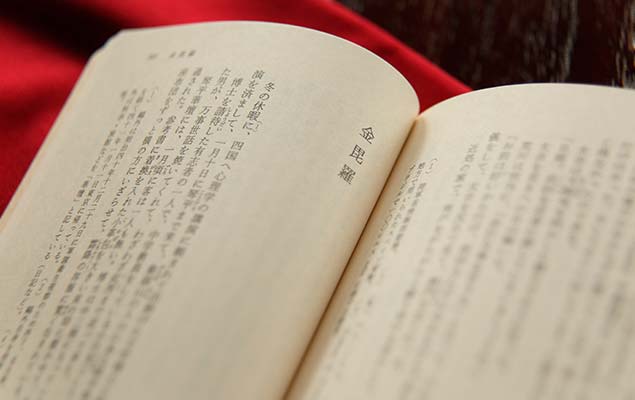
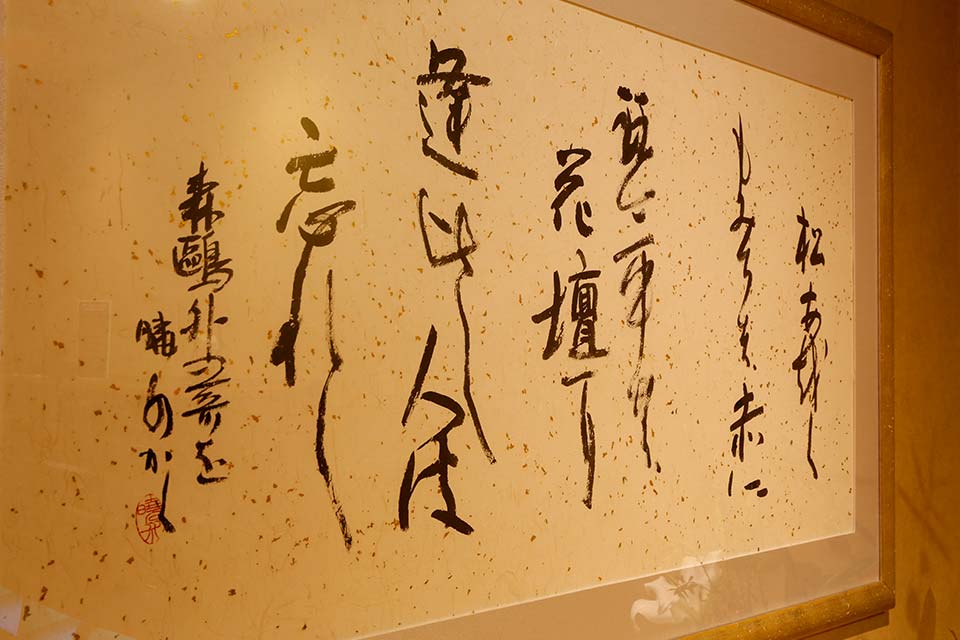
In Mori Ogai's Konpira, the protagonist, Dr. Ono visits Kotohira for work and is recommended a visit to Kotohira-gu shrine. Feeling homesick, he returns to Tokyo without completing the pilgrimage, but the inn he stays at is Kotohira Kadan. In 1908, Mori Ogai came to Kagawa on a health inspection while he was the Surgeon General of the Imperial Japanese Army and stayed at Kotohira Kadan for three days. The following year, he published Konpira. At the entrance of our main spa Kissho no Yu, visitors can find a calligraphy display of a poem by Mori Ogai. The calligrapher is Ohkouchi Gyosui, though the words are the famous writer's from his visit to Kotohira Kadan.

The pines are green, the maples are red/ I've come here to Kotohira's Kadan/ And the people, I won't forget… By Mori Ogai
In Mori Ogai's Konpira, the protagonist, Dr. Ono visits Kotohira for work and is recommended a visit to Kotohira-gu shrine. Feeling homesick, he returns to Tokyo without completing the pilgrimage, but the inn he stays at is Kotohira Kadan. In 1908, Mori Ogai came to Kagawa on a health inspection while he was the Surgeon General of the Imperial Japanese Army and stayed at Kotohira Kadan for three days. The following year, he published Konpira. At the entrance of our main spa Kissho no Yu, visitors can find a calligraphy display of a poem by Mori Ogai. The calligrapher is Ohkouchi Gyosui, though the words are the famous writer's from his visit to Kotohira Kadan.
KOTOHIRA KADAN'S
"THE HISTORY OF KOTOHIRA KADAN"
DIGITAL BOOK
Over 400 Years of History
